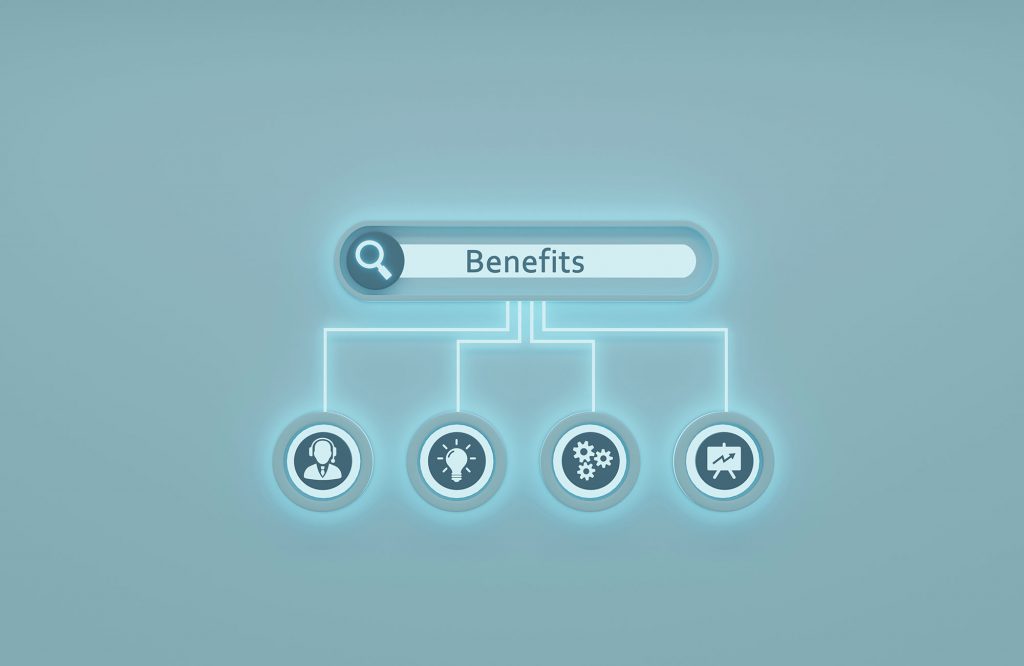
Help Where It Hurts

Insurance industry executives say they want to make the industry more appealing to the next generation of employees, many of whom seek some larger social meaning in what they do.
What better way than to work toward improving the financial well-being of clients’ employees, securing better financial stability for them now and in the future?
Encouraging participation in employee wellness programs, offering more appropriate products, and improving the delivery of benefits are some of the ways employers and their brokers can help employees fortify their financial health. And there are a few pockets of actual financial innovation taking place.
In an April survey of 5,000 people, 52% of respondents said they would need to tap into long-term savings in a year or less.
At many companies, pension plans have been replaced by 401(k) plans, which feature far smaller employer contributions.
A 2019 survey found the percentage of employers offering financial wellness programs increased from 24% in 2015 to 53% in 2019.
The Dire State
There is widespread evidence that many Americans are not financially secure.
“We’ve all seen the Federal Reserve statistics—the majority of people can’t afford $400 for an emergency and don’t have enough saved up from their pay to tide themselves over for a few months—and that was before COVID-19,” says Lori Lucas, president and CEO of the Employee Benefit Research Institute (EBRI).
COVID-19, not surprisingly, has made the situation worse. A total of 52% of people surveyed in April said they would need to tap into long-term savings in a year or less, according to a survey of 5,000 people by Betterment, a New York City-based financial services company. Of those surveyed, 43% said it would take them six months or longer to financially recover from the pandemic. While federal stimulus checks and expanded unemployment benefits under the CARES Act have cushioned the impact, the long-term prognosis when such assistance ends is dim.
A driver of this financial malaise is stagnant wage growth, despite inflation. In just 10 of the last 40 years have most workers seen consistently positive wage growth: in the tight labor market of the late 1990s and in the last five years (2014–2019), when the unemployment rate hit its lowest point in 50 years, according to a study released in February by the Economic Policy Institute. “Despite these gains, wage inequality continues to climb, and workers at the middle and bottom of the wage scale are just making up lost ground and continue to struggle to make ends meet rather than get ahead,” the report found. “The median hourly wage—the wage at which half the workforce is paid more and half the workforce is paid less—stands at $19.33 per hour. For a full-time, full-year worker, this would translate into about $40,000 per year.”
In addition to the wage stagnation, the income disparity between line employees and executives has grown. Pension plans, for example, have long been the most fundamental financial benefit provided to employees by many organizations, particularly large ones. But at a growing number of companies, pension plans have been replaced by defined contribution 401(k) plans, which feature far smaller employer contributions and require aggressive savings steps by employees that many do not take.
“I think the average employee is losing ground because inflation-adjusted wage growth has been fairly stagnant,” says Ben Hall, a vice president and managing director at Johnson, Kendall & Johnson’s JKJ Retirement Services, which offered the first retirement plan with a 401(k) feature in 1981. “In addition, 401(k) plans were a boon for employers because, compared to defined benefit plans, the 401(k) took the onus off the employer and put it on the employees. Generally speaking, when you look at the money the employer saved from eliminating pensions, they didn’t turn around and put that money into 401(k) contributions.”
Additionally, employers have responded to rising healthcare costs by requiring employees to increase their contributions to the second major benefit they provide—health insurance—through increased premiums, deductibles and co-pays.
“The good news is that, unlike baby boomers, who entered the workforce during a time where there was almost an expectation their employer would do it for them, millennials came into the workforce with the understanding that retirement readiness was on themselves to own,” Hall notes.
Financial Literacy
There are good reasons for employers to care about employee financial security. A 2019 EBRI study found that financial wellness initiatives for employees can improve employee satisfaction, reduce financial stress, improve employee retention, improve use of existing benefits, increase productivity, and reduce absenteeism and healthcare costs.
Helping employees save for retirement also is strategically important for organizations. Given that federal anti-age-discrimination law prohibits terminating older employees based upon age and that organizations want to provide growth opportunities for younger cohorts and maintain an energetic and productive workforce, facilitating a comfortable retirement is important. “You don’t want employees working until they are 90 years old because they can’t afford to retire,” says Michael Webb, a vice president at retirement plan consultancy Cammack Retirement Group.
Many say a good first step for employers is to provide financial wellness training. Many employees are woefully unaware of basic financial concepts, such as the fact that retirement savings in mutual funds have higher growth rates and better rates of taxation than savings accounts. And many have poor financial hygiene, such as no budgeting and a resulting lack of awareness of the sources of their financial challenges and opportunities to address them.
“Americans demonstrate relatively low levels of financial literacy and have difficulty applying financial decision-making skills to real-life situations,” found the 2018 “National Financial Capability Study” by the Finra Investor Education Foundation. It reveals that, when study participants were asked five questions covering aspects of economics and finance encountered in everyday life, 66% of U.S. respondents were unable to answer more than three of the five questions correctly.
The importance of financial wellness training is demonstrated by a Willis Towers Watson survey of 8,000 U.S. employees conducted between July and September 2019. The survey found that financial insecurity extends into high earners as well as those lower on the pay scale. Thus, earning more money alone might not necessarily translate into improved financial wellness.
Breaking Down Financial Wellness Programs
The number of employers offering financial wellness programs is rising. A 2019 Bank of America survey found that the percentage of employers offering financial wellness programs increased from 24% in 2015 to 53% in 2019, though some sources note the quality of such programs varies.
Insurance carriers and employee benefits brokerages have been active in this space. Hub International, which serves mid-market employers averaging 500 employees, provides a comprehensive wellness program to clients.
“My role as a wellness consultant is to structure strategies to improve employee well-being,” says Lindsay Steckler, West region health and performance consultant at Chicago-based Hub. “If employers are interested in addressing employees’ financial well-being, we need to increase their financial confidence, which is not a dollar amount but, rather, having the knowledge, skills and resources needed to manage their current financial state. There is a strong psychological component to financial wellness, and it is not a static state: it varies over the course of a lifetime as a person enters different life phases.”
When creating a financial well-being strategy, Steckler says, one of the first things she does is audit the company’s current employee benefits. She gathers survey data to learn more about the employees and find out what areas they are struggling with.
“Oftentimes this data will indicate that the biggest financial concern for a majority of employees is an area not addressed in their current benefits offering, like keeping up with monthly expenses,” Steckler says. “From there, we can fill in the gaps from both an education and product solution standpoint. It’s important to have a strong communications strategy so employees are aware of available benefits and resources and how these components—like a 401(k), health savings account, employee assistance program and voluntary benefits—work in concert to mitigate financial stress, particularly with more employees working remotely.”
Data from annual surveys that measure gains from such programs, such as improved retention rates and employee engagement, help validate the expenditure on them, says Heather Garbers, vice president of voluntary benefits at Hub.
Some employee assistance programs (EAPs), common at midsize and larger employers, may actually offer employees some financial counseling. “Most employers have packages from EAP vendors that offer financial counseling for employees, perhaps three visits with a financial coach that are free and baked in, and employers can pay more for extra sessions,” Steckler says.
Prudential Financial has offered a comprehensive in-person, on-site and virtual financial wellness program, Prudential Pathways, to its institutional retirement plan and insurance clients since 2014 and to its own employees since 2016, notes Julie Brandon, vice president and head of financial wellness distribution at Prudential Financial.
“We have educated employees from every walk of life and work with employers representing a wide variety of industries,” Brandon says. “Based on our experience and research, we customize our educational content to match the employee demographics. This ensures relevant and helpful content is being consumed.” Such presentations, she says, are also customized to employers’ benefits packages.
Prudential debuted a more streamlined and more turnkey version of the program in mid-July, “The Way Forward: Financial Life After Lockdown,” to make it easier for HR staff to implement, given the time demands of COVID-19, Brandon notes.
The parameters of such programs often vary by workforce composition, although there are a few common areas.
“One of the things that people need help with is developing a savings hierarchy: what things to save for in what order and what savings vehicles to use to save for them,” says JKJ’s Hall. “You need to save for the long term, but the first thing you need is a rainy day fund. Then, there is a choice between saving for kids and college and retirement, and while many think they should save next for college, the reality is there are grants and scholarships and many ways for them to get money toward higher education, whereas there are a lot fewer ways to get money for retirement. There is also the issue of where HSAs [health savings accounts] and high-deductible health plans fit in the hierarchy, which can depend on whether the 401(k) has a match.”
Most importantly, employees need to better budget to ensure they are saving toward rainy days and big-ticket interim financial items like cars, college educations, and homes. “Budgeting and managing credit scores are often the biggest challenges folks face, and often it comes down to just acting your wage and not overspending,” Hall says.
Rob Kotler, head of the retirement practice at RCM&D, notes the program should be scalable. “Many employees need a basic financial wellness program: maybe, ‘How to Budget and Debt Management.’ Then you can scale up to more comprehensive services down the road as they accumulate assets and need help with the more complicated financial scenarios.”
Many providers are also supplementing generalized financial wellness education with one-on-one counseling within such programs or from outside vendors.
The Pathways program at Prudential, for example, includes a subcomponent, Prudential Advisors On-Site, which is designed to provide each of the company’s major U.S. locations with a trained Prudential financial advisor directly on site. These advisors are available for consultation on a wide variety of financial topics at no cost to subscriber employees. If the employee chooses, Brandon says, financial advisors can provide more detailed financial services.
That human element is a key component. Brian Ford, leader of the Momentum OnUp financial wellness program at Truist, the successor to the combined SunTrust and BB&T banks, agrees that at least some live human interaction is important—as opposed to recorded sessions or software analytics—to disarm skepticism about such programs and demonstrate how the programs will help employees and build enthusiasm for participation.
For many employers, says Shane Bartling, retirement director at Willis Towers Watson, one-on-one counseling can cost less than $8 per employee per month. “It is a surprisingly low-cost investment,” Bartling says. “A large employer might have six counselors engaged in benefits offerings, as facilitated by scheduling technology to handle the call volume.”
Leading providers include Brightside and Financial Finesse, according to Bartling. “Brightside also offers services beyond counseling, such as loans, emergency savings and penalty-free banking, with commissions generated from projects given back to employees,” he says. Garbers, from Hub, also cited LearnVest and Mint.com among leading providers.
The quality and comprehensiveness of financial wellness programs varies. “Most 401(k) recordkeepers and insurance providers have some financial wellness built into their online offerings, but they are often not where they need to be to be effective,” RCM&D’s Kotler says. “Some 401(k) recordkeepers, for example, will emphasize retirement savings while neglecting to state that it is necessary to first have rainy day funds. They sometimes are also not well rounded enough to ask related questions like, ‘Do you have a will?’ or ‘Do you have life insurance?’ I prefer stand-alone programs like SmartDollar and Financial Finesse because they do ask such questions and are well rounded. I do think that the recordkeepers will get there by buying stand-alones or developing programs from scratch, but I do not think they are all there now.”
Kotler says RCM&D offers a computer-based stand-alone financial wellness program that uses SmartDollar and Financial Finesse. “RCM&D offers only business-to-business investment management services, not private wealth management, which allows us to be fiduciaries for retirement plans and deliver unbiased advice through the financial cycle. We also offer all clients one-on-one financial advice to help them determine where they are financially and what is the best way to take advantage of their benefits programs. Many of our competitors use 401(k) programs as a loss leader to deliver higher-margin wealth-management services,” he says.
Health Savings
Health costs are an enormous factor in financial wellness, particularly for older employees. There is a powerful relationship between financial security and health security, says Hub’s Steckler. Americans’ health is not good compared to people in other wealthy countries. Conditions related to obesity, lack of exercise, and lack of routine health maintenance lead to more serious and more expensive health conditions. And lack of financial security can cause stress and behaviors that lead to illness, such as neglect of routine health maintenance and substance abuse.
Health insurance carriers have been providing wellness programs for decades, with an eye to both improving health and reducing the need for more expensive emergency and chronic-condition care.
There are also many insurance options that can address medical care sticker shock, such as hospital indemnity, accident, critical illness, and telemedicine, Garbers says. “This is part of the analysis we do of the employer group. We review benefits options and see if there are gaps in coverage and, if so, try to address them. For example, for a client with many employees of childbearing age participating in high-deductible health plans, we could offer a hospital indemnity plan. Likewise, there are products that can address the fact that, for long-term disability policies, there may be no coverage in the first 180 days.”
High-deductible health plans (HDHPs), when coupled with health savings accounts, in particular, can likewise address health spending and general financial wealth accrual in a single savings and insurance vehicle by allowing employees to accumulate tax-advantaged health savings dollars that can be carried into retirement and used for non-health purposes after age 65.
HSAs are dramatically underutilized, Kotler says. “They could have a significant long-term impact on financial savings,” he says. “I would love to see legislative changes that would increase the availability of HSAs by opening them beyond just to those with HDHPs.”
The integration of HSA-HDHPs into an overall financial wellness program can further increase uptake, says Lori Glawe, vice president of Total Rewards at Kingsport, Tennessee-based Eastman Chemical. “In 2018, we transitioned the administration of our HSA benefit offering to Fidelity as a strategic move to bring together 401(k) savings and HSA savings as part of the overall financial planning guidance and advice offered to our team members,” Glawe says. “Since the first year, the average savings in the HSA jumped from $3,600 to $5,500, showing that our team members understand the importance and value of the HSA as a retirement savings vehicle.”
Helping employees save for unexpected financial shocks may be the single most impactful action that employers can take to help their low-wage and most vulnerable employees, says Robert Johnson, founder of Black Entertainment Television. (See more Leader’s Edge coverage on The Finances of Race)
RCM&D is working with insurers to address that need. “We’ve been urging underwriters to develop an employer-based emergency savings account through a recordkeeping platform or working with a bank,” Kotler says. “We are working with a number of recordkeepers who are getting close. The last 10 years were economically really good, but the crisis has shown the need for this.”
In 2018 AARP surveyed workers across the country about emergency savings accounts, asking whether employees would be interested in rainy day accounts, and 71% of respondents said yes. The survey also drilled down into the features respondents felt were important, such as instant access to money and confidentiality. When AARP looked at how employees would respond to different marketing communications for such programs, it found that respondents like to hear such programs are easy and automatic. “This survey has a valuable list of features financial professionals can use to structure rainy day funds,” says David John, a senior strategic policy advisor at AARP.
Addressing Problem Areas
Some carriers and employers are introducing new programs to address employee financial challenges, such as large amounts of student debt. The number of companies providing student loan repayments has risen from 4% in 2018 to 8% in 2019, and just over half of employers continue to provide undergraduate or graduate tuition assistance, which has remained unchanged in the past five years, according to a June 2019 survey by the Society for Human Resource Management.
Since 2016, Fidelity has offered to its employees—and, since 2018, to plan sponsor clients—programs to manage, pay down, and minimize student debt. Employers that use Fidelity as custodian can offer employees a solution called Student Debt: Retirement Option, which allows payments on student debt to generate matching 401(k) contributions from the employer. Under another program, Student Debt: Benefits Choice, employees can trade in unused paid time off for student debt payments. A third program, Student Debt: Direct, offers employees the ability to make after-tax contributions to service student loan debt.
For those with student debt, Kotler says, loan consolidation and loan forgiveness can be part of a strategy to help reduce the burden of loan debt.
Increasing flexibility in the use of benefits is a trend, says Amy Reynolds, a partner at Mercer. She notes that many employers, operating in a climate with constrained resources, are considering ways to repurpose pools of existing benefit spend. “Providers of financial wellness services are continuing to seek creative ways that employers can offer products in a cost-effective manner, such as converting unused vacation to pay down student loan debt,” she says.
“You may see employers in the future take a set pool of benefits dollars and let employees break it up the way that serves them best,” Kotler says.
Other employer programs target savings for children’s higher educations. In 2019, 11% of employers offered payroll deductions for a tax-advantaged education savings plan (529), according to the SHRM survey.
Retirement Plans
As noted, defined contribution retirement plans have largely replaced defined benefit pensions. Particularly with respect to retirement savings, certain plan features can yield enormous dividends, especially when incentivized through employer contributions and matches, says Dave Stinnett, head of the Vanguard strategic retirement consulting team, which offers plan design and participant experience advice to 1,500 plan sponsors. These features include defaulting employees into retirement plan contributions through payroll deductions, auto-escalations over time as income increases, and defaulting employees into target-date funds with asset allocations appropriate to their age.
Only about half of the 1,500 plans Vanguard assists have adopted smart plan designs, Stinnett says, with others indicating these plans are too aggressive.
Many smaller and midsize employers often resist adopting auto-enrollment due to administrative and regulatory burdens for their overworked HR personnel, says JKJ’s Hall. “You either do it well or you don’t do it at all,” Hall says.
But according to Stinnett, a stronger push is winning out over time. At year-end 2019, 62% of all Vanguard participants were using an automatic investment program solely—compared with just 7% at the end of 2004 and just 25% at the end of 2007. And the company expects this will rise to eight in 10 Vanguard participants by 2024, according to a 2020 Vanguard report, “How America Saves 2020.”
A major problem that remains is that many employers do not offer any retirement plan for their employees. The 2019 SECURE Act contained reforms that were intended to make it easier for smaller employers to offer 401(k)-type plans, including using multiple-employer plans (MEPs), which are retirement savings plans adopted by two or more unrelated employers. According to Hall, it’s still too early to say if that reform will be successful in expanding employee access to 401(k) plans.
This is an area where insurance brokers can lean in, AARP’s John says. “If you find yourself with a client or small business in a state with a state-sponsored retirement plan—Oregon, California and Illinois have one in place, and 10 other states are coming online soon—and the employer isn’t ready to offer a MEP or a 401(k), you might want to encourage them to get started with the state auto-IRA,” John says. “If you can get them into those, you can upsell them down the road to a MEP or 401(k), since they will already have experience with a payroll deduction plan.”
Job changes are also a source of loss for retirement accounts.
A new program, pioneered by Spencer Williams, founder and CEO of Retirement Clearinghouse, a company majority-owned by BET’s Johnson, works with plan recordkeepers to allow seamless transfers of assets between employers, even if months or years pass before an employee gets a new job. In July, Alight Solutions, a leading provider of next-level human capital and business solutions, became the first recordkeeper to offer Retirement Clearinghouse’s auto-portability solution to its client base of 185 defined contribution plan sponsors serving nearly five million employees.
Many sources also note that, while the defined contribution paradigm has done an adequate job with wealth accumulation for many, it has done little to help retired employees effectively draw down assets to help ensure they do not outlive their wealth. While certified financial professionals can offer some helpful services, they generally tend to a far more affluent customer base than the norm.
Better financial wellness education from employer plans will help employees start thinking about solutions to the longevity challenge. The SECURE Act requires disclosure to plan participants of how much their holdings would be worth if drawn down over a period of time as monthly income. “That may help employees to understand better how their retirement savings compare to what they will need in retirement,” Hall says.
Some also wonder whether annuities may be part of the solution. The SECURE Act includes some provisions to reduce the liability for including annuity components in 401(k) plans. Most say it is too early to tell if there will be adequate uptake. “There are not a lot of products that can sit on a 401(k) platform and do that,” says RCM&D’s Kotler. “It is a useful product to offer and doing so through an employer means you may drive down investment costs, though we have not seen a huge clamoring yet of, ‘Let me buy an annuity.’ I think this is shooting at a small niche.”
Hall says annuities have tended to be a complex product, with many bells and whistles, sold on an individualized, one-on-one basis, often as a wealth-management tool for more affluent customers. “How do we get the annuity carriers to adapt in such a way to create a valuable offering that the average worker can truly understand in the 401(k) space?” Hall asks.
One product that does target that niche is offered by Prudential Retirement. “Plan sponsor interest in IncomeFlex, our in-plan guaranteed lifetime income solution, is at an all-time high,” says Doug McIntosh, vice president of investments at Prudential Retirement. “We’ve been offering this solution on our recordkeeping platform since 2006. Currently 6,870 of the 401(k) plans we administer offer IncomeFlex, and 56,061 plan participants are enrolled in the solution, accounting for $2.5 billion in assets. This is about a 6% uptake of eligible participants, mirroring the use of any voluntary options within the DC plan. However, when delivered as a default, adoption sits a little over 85%, again similar to other default options.”
IncomeFlex is designed to provide growth opportunity when markets rise, protect future retirement income when markets fall, particularly as policyholders near retirement, allow complete access to the underlying market value at all times, and deliver guaranteed retirement income for life at an institutional cost, regardless of future market volatility.
Incenting Good Behavior
Employer contributions can be powerful tools in driving participation. The most obvious example is matching employee contributions to 401(k) plans. But Truist, for example, is using a cash bonus incentive, offering $750 to employees who complete financial wellness programs.
Among the more lucrative matching and contribution policies is that of Farmers Insurance. “A 4% base contribution is contributed to the plan participant’s account, regardless of their savings choices,” notes Tony Tomich, head of pension investments at Farmers. “If a plan participant elects to save 6%, they will receive a 6% matching contribution in addition to the 4% base contribution. Therefore, the plan’s participant gets a 16% contribution to their 401(k) savings account for a 6% savings election.”
Employers are one of the most trusted sources of authority for employees, surveys by communications consultancy Edelman show. Still, employers could do better, a recent Edelman survey found. “[T]he pandemic has exposed several areas of deep concern: Half of people believe business is doing poorly, mediocre or completely failing at putting people before profits; only 43% believe that companies are protecting their employees sufficiently from COVID-19, and 46% do not believe business is helping smaller suppliers and business customers stay afloat,” according to Edelman’s “2020 Edelman Trust Barometer Spring Update: Trust and the COVID-19 Pandemic.”
Employees are looking for employers to go beyond a wage relationship and help them prepare for long-term financial stability. That pressure can open a door of opportunity for employee benefits brokers.
Willis Towers Watson surveyed 8,000 U.S. employees and found:
- 38% of employees live paycheck to paycheck
- 39% of employees could not come up with $3,000 if an unexpected need arose within the next month
- 18% of employees making more than $100,000 annually live paycheck to paycheck
- 69% of employees are saving less for retirement than they think they should
- 32% of employees have financial problems that negatively affect their lives
- 64% of employees believe their generation is likely to be much worse off in retirement than that of their parents
Source: Willis Towers Watson “Global Benefits Attitudes Survey”




